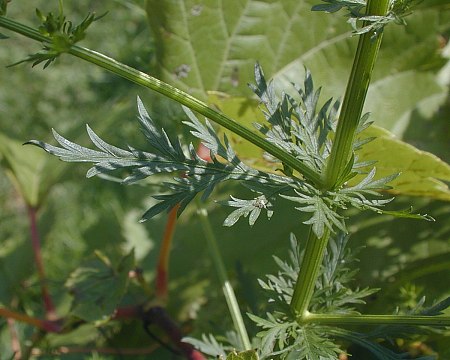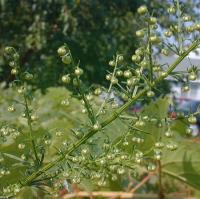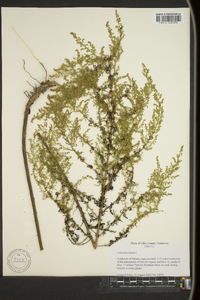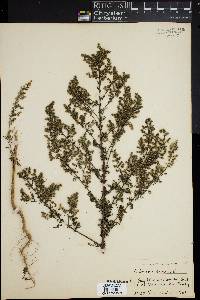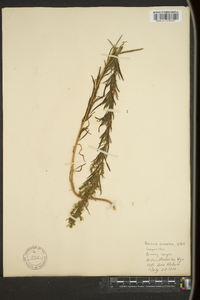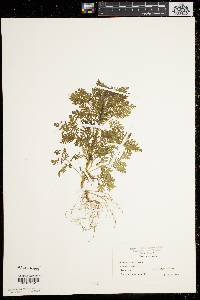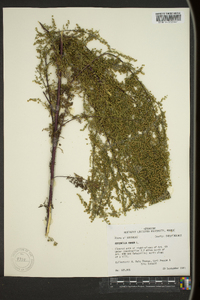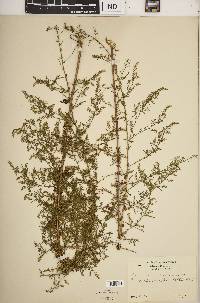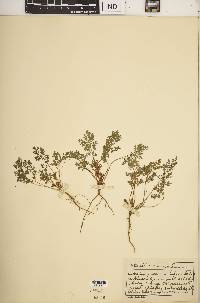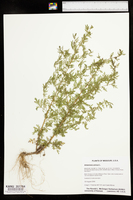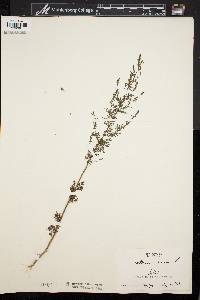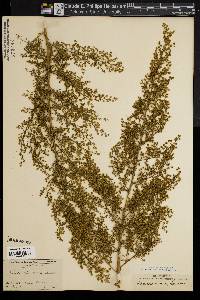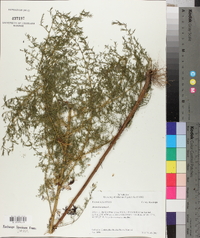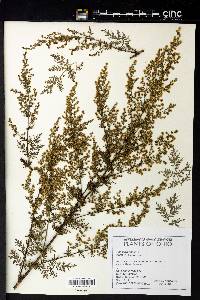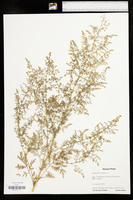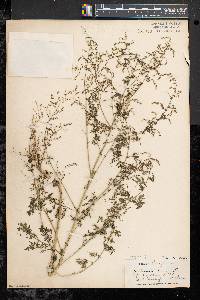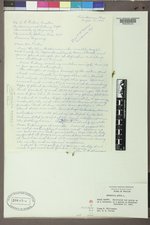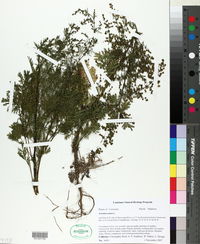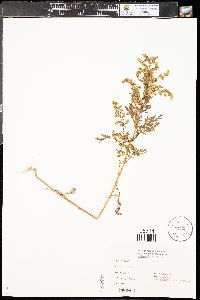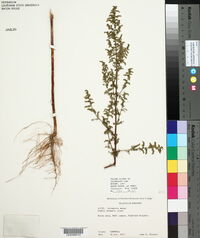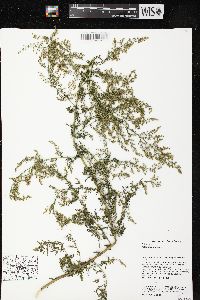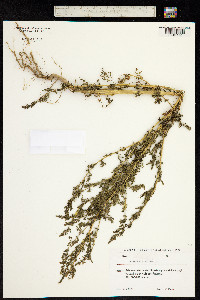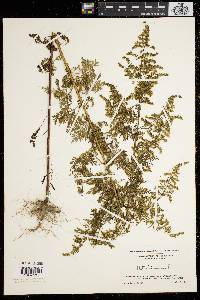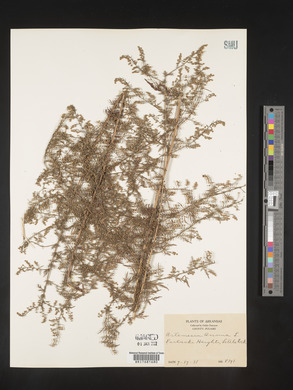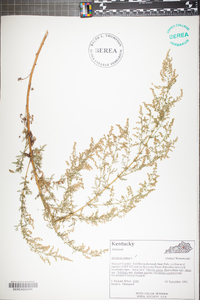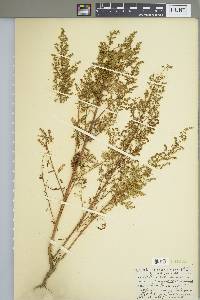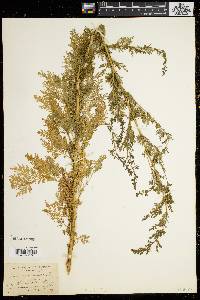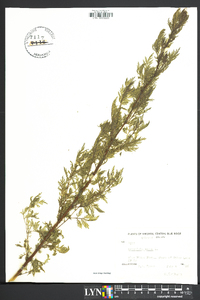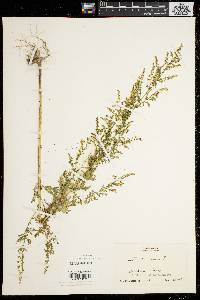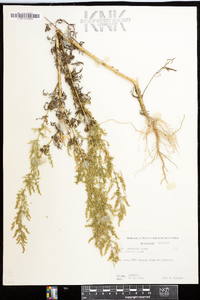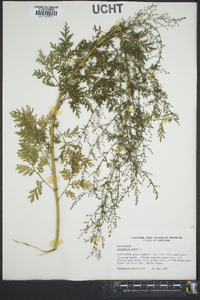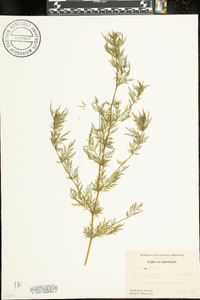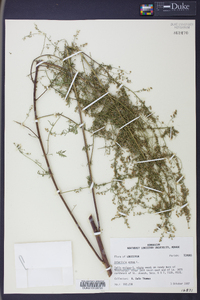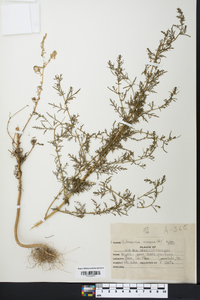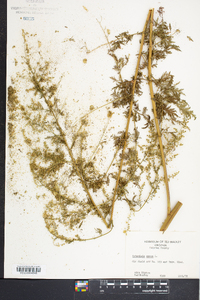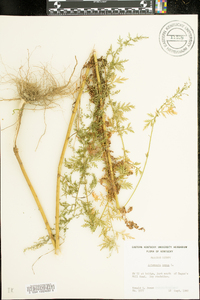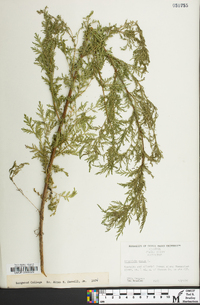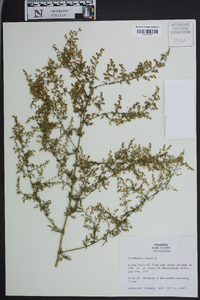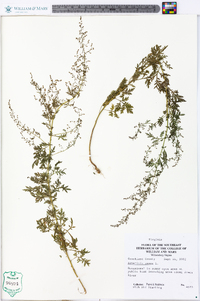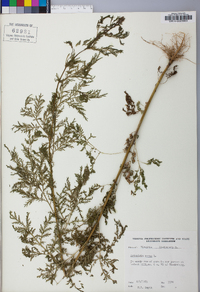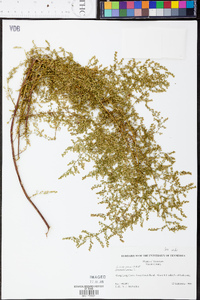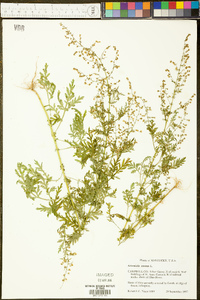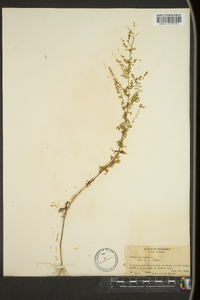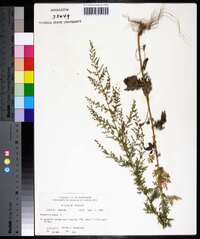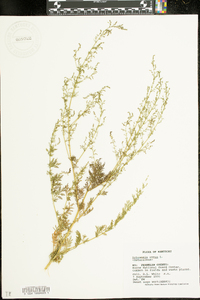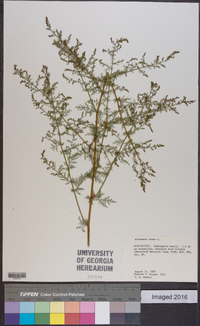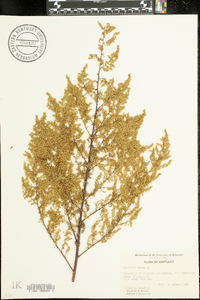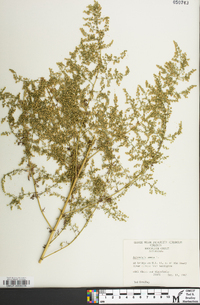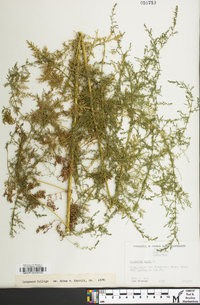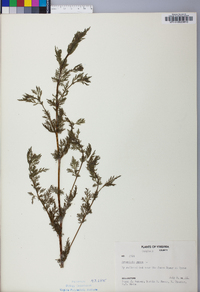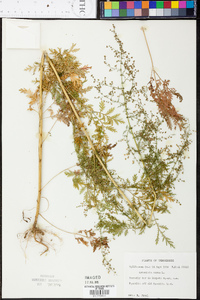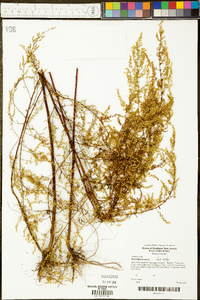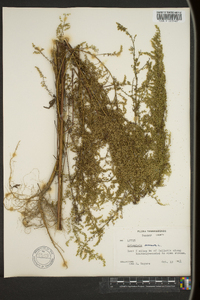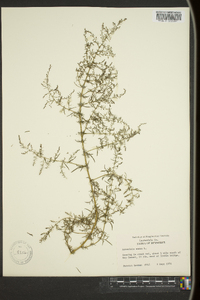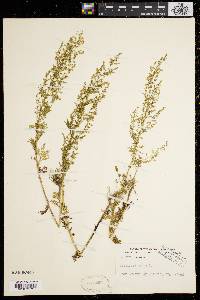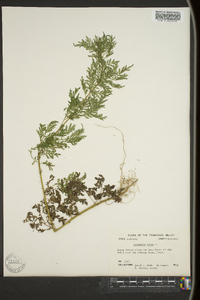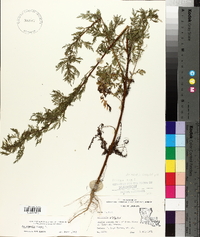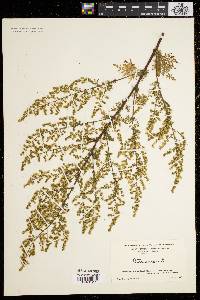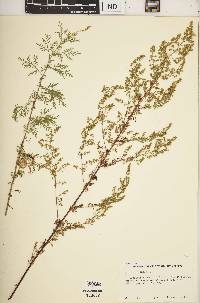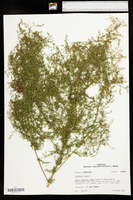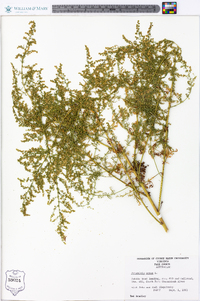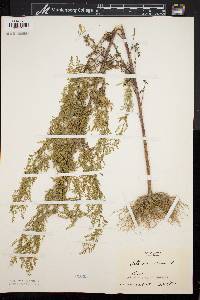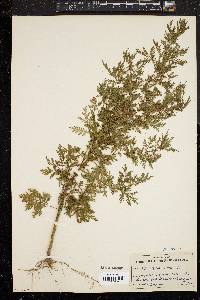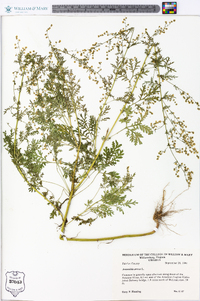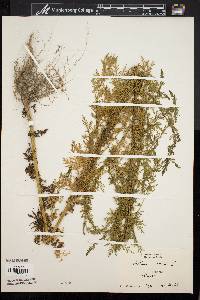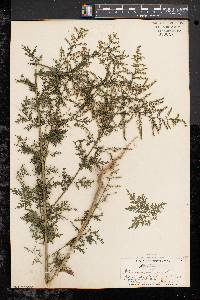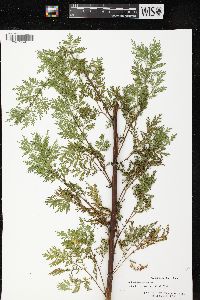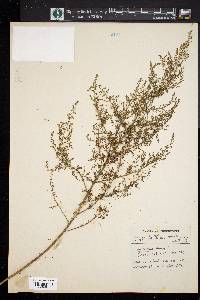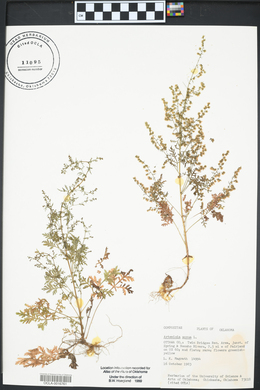
|
|
|
|
Family: Asteraceae
Annual Wormwood
[Artemisia suaveolens Fisch.] |
Annuals, 30-200(-300) cm, sweetly aromatic. Stems mostly 1, erect, green, turning to reddish brown with age, simple (smooth or ribbed), glabrous or sparsely hairy. Leaves cauline, bright green; blades triangular to broadly ovate, 2-5(-10) × 2-4 cm, 2-3-pinnatifid (lobes relatively narrow, ± toothed), faces glabrous, gland-dotted. Heads (nodding, peduncles 2-5 mm) in open, (diffusely branched, leafy) arrays 15-30(-40) × 10-20 cm. Involucres globose, 1.5-2.5 × 1.5-2.5 mm. Phyllaries (green) lanceolate, glabrous. Florets: pistillate (0-)10-20; bisexual 18-24; corollas pale yellow (broadly campanulate), 0.5-1 mm, glabrous. Cypselae oblong (flattened), 0.3-0.8 mm, glabrous. 2n = 18. Flowering late summer-fall. Moist waste areas, sandy soils; 0-2000 m; introduced; N.B., Ont., Que.; Ala., Ariz., Ark., Calif., Colo., Conn., Del., D.C., Idaho, Ill., Ind., Iowa, Kans., Ky., La., Maine, Md., Mass., Mich., Miss., Mont., Nebr., N.H., N.J., N.Y., N.C., Ohio, Okla., Oreg., Pa., Tenn., Tex., Vt., Va., Wash., W.Va., Wis., Wyo.; Eurasia. Widely cultivated for aromatic oils, Artemisia annua often persists in gardens, becoming naturalized in moist-temperate areas (especially in eastern United States). Reports of naturalization may be exaggerated (reported for Prince Edward Island, but not established). The systematic placement of this species appears to align most closely with species of the Eurasian subg. Seriphidium (L. E. Watson et al. 2002). Molecular evidence suggests that the Artemisia annua lineage may be ancestral to woody species in the Old World.
Sweet-scented glabrous annual 3-30 dm, usually bushy-branched; lvs 2-10 cm, mostly twice or thrice pinnatifid, the ultimate segments linear or lanceolate, sharply toothed; infl broad and open, panicle-like, the heads loose, often nodding, on evident short peduncles; invol glabrous, 1-2 mm; achenes narrowly turbinate, obscurely or scarcely nerved; 2n=18. Fields and waste places; native to Asia and e. Europe, now naturalized in N. Amer., especially in e. and c. U.S. and adj. Can. Aug.-Nov. Source of a potentially important antimalarial drug, artemisinin. Gleason, Henry A. & Cronquist, Arthur J. 1991. Manual of vascular plants of northeastern United States and adjacent Canada. lxxv + 910 pp. ©The New York Botanical Garden. All rights reserved. Used by permission. From Flora of Indiana (1940) by Charles C. Deam Local throughout southern Indiana and there are reports of it from Lake and Montgomery Counties. A very common weed half way up the slope of the bank of the Ohio River along almost the entire length of the river in this state. I believe that it will become an obnoxious weed in many places in the southern part of the state. It prefers moist, muddy banks and dry, sandy soils. Frequent about habitations. Indiana Coefficient of Conservatism: C = null, non-native Wetland Indicator Status: FACU |
This project was made possible in part by the Institute of Museum and Library Services [MG-70-19-0057-19].
Powered by Symbiota

